What is Artificial Intelligence and What are its Applications?
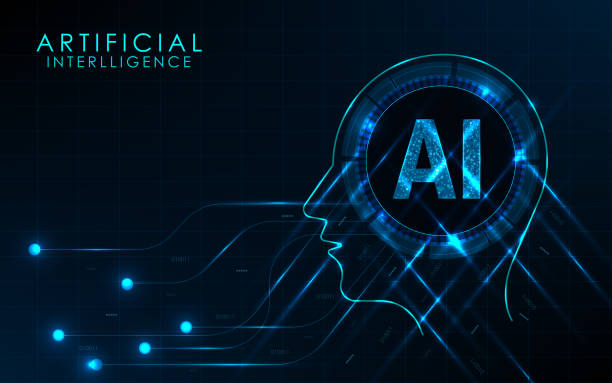
#Artificial_Intelligence (AI), or AI for short, is a branch of computer science that deals with building machines and systems capable of performing tasks that usually require human intelligence. These tasks include learning, reasoning, problem-solving, natural language understanding, and pattern recognition. Artificial intelligence is essentially an attempt to simulate human thinking processes in machines. The applications of artificial intelligence are very extensive and affect almost all aspects of our lives. These applications include #Automotive, #Healthcare, #Finance, #Education, #Marketing, #Security, and #Entertainment. For example, in the automotive industry, artificial intelligence plays an important role in the development of self-driving cars. In the field of healthcare, artificial intelligence is used to diagnose diseases, develop drugs, and provide personalized care. Financial systems use artificial intelligence to detect fraud and manage risk. In education, artificial intelligence can be used to provide personalized training and automate administrative tasks. Artificial intelligence helps improve efficiency and effectiveness in various industries by providing innovative solutions.
Does your current company website reflect the credibility and power of your brand as it should? Rasaweb solves this challenge for you with professional corporate website design.
✅ Increase credibility and visitor trust
✅ Attract more targeted customers
⚡ Click for free consultation!
Types of Artificial Intelligence: A Detailed Look
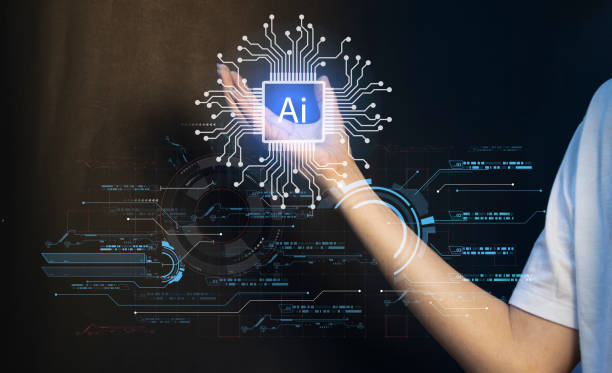
Artificial intelligence can be divided into different categories based on their abilities and performance. One of these classifications is based on ability. In this classification, artificial intelligence is divided into two main categories: Weak AI (Narrow AI) and Strong AI (General AI). Weak AI refers to systems that are designed to perform a specific task and have intelligent performance in that limited area. For example, a facial recognition system or a computer chess game are examples of weak AI. In contrast, strong AI refers to systems that are capable of performing any task that a human can perform. This type of artificial intelligence is still in the research stage and has not been fully realized. Another classification is based on performance, which divides artificial intelligence into four categories: Reactive Machines, Limited Memory, Theory of Mind, and Self-Awareness. Reactive machines are the simplest type of artificial intelligence and only react based on current inputs. Limited memory systems can use their past experiences to make decisions. Theory of Mind systems are capable of understanding and reasoning about the mental states of others, and Self-Awareness systems, which are the most complex type of artificial intelligence, have self-awareness and emotions.
Machine Learning: The Beating Heart of Artificial Intelligence
![]()
#Machine_Learning is one of the main sub-branches of artificial intelligence that allows machines to learn from data and improve their performance without explicit programming. In fact, instead of giving machines precise instructions to perform a task, machine learning allows them to discover patterns and relationships in the data by analyzing it, and use these patterns to make predictions or decisions. Machine learning is divided into three main categories: Supervised Learning, Unsupervised Learning, and Reinforcement Learning. In supervised learning, the machine is trained using labeled data (data for which the correct answer is known). In unsupervised learning, the machine uses unlabeled data to discover patterns and hidden structures in the data. In reinforcement learning, the machine learns how to perform best in a specific environment by trial and error. Machine learning algorithms are diverse, and each is suitable for a specific type of problem. Some of the most common machine learning algorithms include Linear Regression, Decision Tree, Support Vector Machine, and Neural Networks. Machine learning plays a key role in the development of many artificial intelligence applications.
| Learning Type | Description | Examples |
|---|---|---|
| Supervised Learning | Training with labeled data | Spam email detection, Housing price prediction |
| Unsupervised Learning | Discovering patterns in unlabeled data | Customer clustering, Data dimension reduction |
| Reinforcement Learning | Learning through trial and error | Playing games, Robot control |
Neural Networks and Deep Learning

#Neural_Networks are computational models inspired by the structure of the human brain. These networks consist of a large number of nodes (neurons) that are connected in layers. Each node receives an input, processes it, and produces an output. Neural networks can be used to perform a wide range of tasks, including image recognition, natural language processing, and time series prediction. Deep learning is a subset of machine learning that uses deep neural networks (networks with many layers) for learning. Deep neural networks are capable of learning complex features from data and perform better than traditional machine learning algorithms in many areas. Some of the famous deep neural network architectures include Convolutional Neural Networks (CNNs), which are used for image recognition, Recurrent Neural Networks (RNNs), which are used for natural language processing, and Transformer Networks, which have been widely used in natural language processing in recent years. Neural networks and deep learning have played an important role in the advancement of artificial intelligence and have enabled the development of more complex intelligent systems.
Does your current website convert visitors into customers, or does it drive them away? Solve this problem forever with professional corporate website design by Rasaweb!
✅ Creating credibility and powerful branding
✅ Attracting target customers and increasing sales
⚡ Get a free consultation now!
Natural Language Processing: Understanding Human Language by Machines

#Natural_Language_Processing, or NLP for short, is a branch of artificial intelligence that deals with the interaction between computers and human language. The goal of NLP is to enable computers to understand, interpret, generate, and communicate with human language. NLP includes a wide range of tasks, including Speech Recognition, Machine Translation, Sentiment Analysis, Text Summarization, and Question Answering. In recent years, there have been significant advances in the field of NLP due to the development of Large Language Models (LLMs) such as GPT-3 and BERT. These models have been trained using a huge amount of text data and are capable of generating high-quality text, translating languages, and answering questions naturally. NLP is used in many applications, including Chatbots, Voice Assistants, Search Engines, and Content Generation Tools. With the advancement of NLP, it is expected that the interaction between humans and computers will become increasingly natural and easy.
Robotics and Artificial Intelligence: Collaboration for the Future
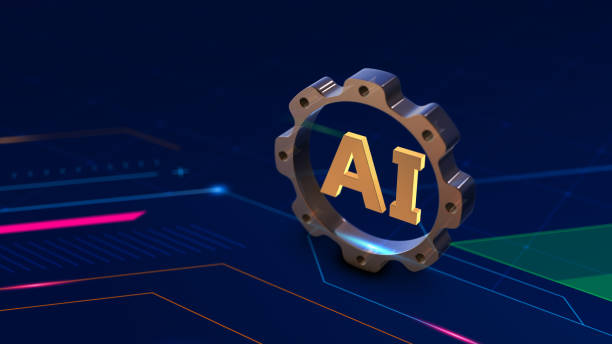
#Robotics is a branch of engineering that deals with the design, construction, operation, and application of robots. Robots are machines that can automatically perform tasks that are usually performed by humans. Artificial intelligence plays an important role in the development of intelligent robots. Using artificial intelligence, robots are able to understand their surroundings, plan routes, make decisions, and learn. The integration of artificial intelligence and robotics enables the development of robots that can operate independently in complex and unpredictable environments. These robots can be used in a wide range of applications, including Industrial Robots, Medical Robots, Agricultural Robots, Service Robots, and Space Exploration Robots. For example, in industry, intelligent robots can be used to perform repetitive, dangerous, or difficult tasks. In the field of healthcare, robots can assist surgeons in performing complex operations or assist patients in rehabilitation. In agriculture, robots can be used for planting, harvesting, and spraying crops. In services, robots can act as waiters, guards, or guides. With the advancement of artificial intelligence and robotics, it is expected that intelligent robots will play a more important role in our lives.
Challenges and Ethical Concerns of Artificial Intelligence

Artificial intelligence, despite its high potential to improve human lives, also brings with it numerous challenges and ethical concerns. One of these concerns is the issue of Bias. If the data used to train artificial intelligence algorithms is biased, these algorithms may also make discriminatory decisions. For example, an automated recruitment system that has been trained using historical data may unconsciously prefer men over women. Another concern is the issue of Privacy. Artificial intelligence systems often require a huge amount of personal data to function effectively. The collection and use of this data can lead to a violation of people’s privacy. In addition, the issue of Security is also an important concern. Artificial intelligence systems may be vulnerable to cyber attacks, and hackers can use them for malicious purposes. Also, the issue of Job Displacement is also a serious concern. With the advancement of artificial intelligence and automation, many jobs may be lost. To address these challenges and concerns, it is necessary to develop appropriate ethical regulations and standards for the development and use of artificial intelligence.
| Challenge/Concern | Description |
|---|---|
| Bias | Discriminatory decisions resulting from biased data |
| Privacy | Violation of privacy due to the collection and use of personal data |
| Security | Vulnerability to cyber attacks |
| Job Loss | Job replacement with automation |
What Should We Expect from the Future of Artificial Intelligence?

The future of artificial intelligence looks very bright and promising. With the increasing advances in machine learning, neural networks, and natural language processing, artificial intelligence is expected to play a more important role in our lives. In the future, artificial intelligence can be used in a wide range of applications, including Healthcare, Education, Transportation, Energy, and Environment. For example, in the field of healthcare, artificial intelligence can be used for early diagnosis of diseases, development of new drugs, and provision of personalized care. In education, artificial intelligence can be used to provide personalized training and automate administrative tasks. In transportation, artificial intelligence can be used to develop self-driving cars and improve the efficiency of transportation systems. In energy, artificial intelligence can be used to optimize energy consumption and develop renewable energy sources. In the environment, artificial intelligence can be used to predict and manage natural disasters and protect biodiversity. However, to realize this potential, it is necessary to seriously consider the challenges and ethical concerns of artificial intelligence and develop appropriate ethical regulations and standards for the development and use of artificial intelligence.
Research shows that 80% of customers trust companies with professional websites more. Does your current website inspire this trust?
With Rasaweb’s professional corporate website design services, solve the problem of customer distrust and weak online image forever!
✅ Create a professional image and increase customer trust
✅ Attract more sales leads and grow your business
⚡ Get a free consultation
How to Enter the World of Artificial Intelligence?
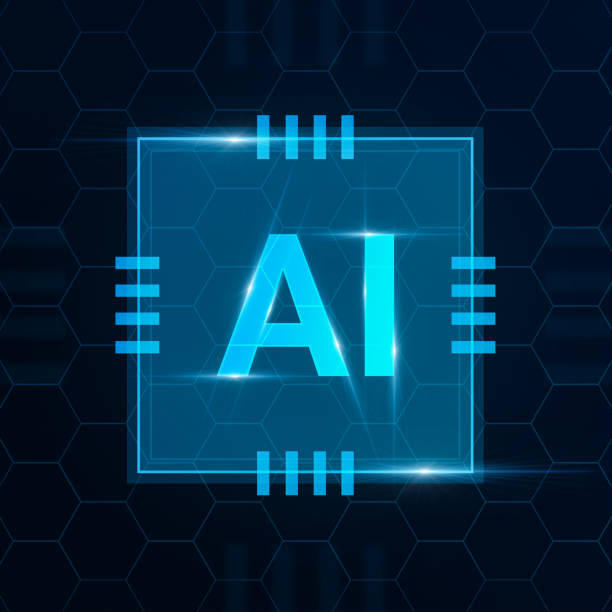
If you are interested in the #World_of_Artificial_Intelligence and want to work in this field, there are various ways to enter this area. One of these ways is studying in related fields. Fields such as computer science, electrical engineering, mathematics, and statistics provide the necessary foundations for entering the world of artificial intelligence. You can also participate in training courses and specialized artificial intelligence workshops to strengthen your practical skills in this field. There are also many online educational resources that you can use to learn the concepts and techniques of artificial intelligence. In addition, building a portfolio of practical projects can also help you find a job in this field. You can do your own artificial intelligence projects and showcase them in an online portfolio. Also, participating in artificial intelligence competitions and challenges can help you learn and network with other professionals in this field. Finally, networking with other artificial intelligence professionals can also help you find job opportunities and learn from their experiences.
Key Concepts and Common Terms in Artificial Intelligence
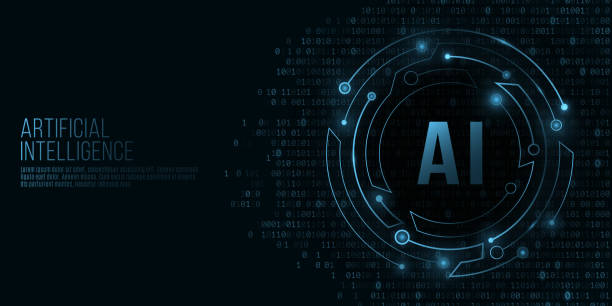
To better understand artificial intelligence, it is necessary to be familiar with the key concepts and common terms in this field. Some of these concepts and terms include Algorithm, Data, Model, Learning, Neural Network, Deep Learning, Natural Language Processing, Robotics, Supervised Learning, Unsupervised Learning, and Reinforcement Learning. An algorithm is a set of instructions designed to solve a specific problem. Data is information that is used to train artificial intelligence algorithms. A model is a representation of a system or process that is built using data and algorithms. Learning is the process in which a model is trained using data to improve its performance. A neural network is a computational model inspired by the structure of the human brain. Deep learning is a subset of machine learning that uses deep neural networks for learning. Natural language processing is a branch of artificial intelligence that deals with the interaction between computers and human language. Robotics is a branch of engineering that deals with the design, construction, operation, and application of robots. Supervised learning, unsupervised learning, and reinforcement learning are different types of machine learning.
Frequently Asked Questions
| Question | Answer |
|---|---|
| What is artificial intelligence? | It is the simulation of human intelligence in machines programmed to think like humans and mimic their actions. |
| What are the main branches of artificial intelligence? | They include machine learning, deep learning, natural language processing, computer vision, and robotics. |
| What is Machine Learning? | It is a branch of AI that focuses on enabling systems to learn from data and identify patterns without explicit programming. |
| Give examples of AI applications in our daily lives. | Voice assistants (such as Siri and Alexa), recommendation systems on Netflix and Amazon, self-driving cars, and facial recognition programs. |
| What is Deep Learning? | It is a subset of machine learning that uses artificial neural networks with multiple layers (deep) to process large amounts of data. |
| What is Natural Language Processing (NLP)? | It is a branch of AI that focuses on enabling computers to understand, interpret, and generate human language. |
| What are some of the ethical concerns related to AI? | They include bias in data, privacy, job loss, and responsibility in case of errors. |
| What are the main benefits of AI? | Increased efficiency, improved decision-making, automation of repetitive tasks, and discovery of complex patterns in data. |
| How is AI used in the healthcare field? | In diagnosing diseases, discovering drugs, analyzing medical images, and providing personalized patient care. |
| How do you see the future of AI? | It is expected to continue developing at a rapid pace, affecting all aspects of human life, from industry to education and entertainment. |
And other services of Rasa Web Advertising Agency in the field of advertising
Intelligent Marketing Automation: Designed for businesses looking to engage users through intelligent data analysis.
Intelligent Brand Identity: An effective tool for user engagement with precise audience targeting.
Intelligent Marketing Automation: An effective tool for user engagement by customizing the user experience.
Intelligent Conversion Rate Optimization: A dedicated service for online growth based on a content-driven SEO strategy.
Intelligent Conversion Rate Optimization: Transform your SEO ranking with the help of custom programming.
And more than hundreds of other services in the field of internet advertising, advertising consulting, and organizational solutions
Internet Advertising | Advertising Strategy | Advertisement Report
Sources
What is Artificial Intelligence? – IBM
,What is Artificial Intelligence (AI)? | Intel
,What is Artificial Intelligence (AI)? – Amazon Web Services
,Discovery with Artificial Intelligence – DeepMind
? Rasaweb is your creative, strategic partner in the digital world. From search engine optimization to multilingual website design and content marketing, we ensure the growth and visibility of your business.
📍 Tehran, Mirdamad Street, next to the Central Bank, South Kazerun Alley, Ramin Alley No. 6
“`




